Clean Water and Sanitation
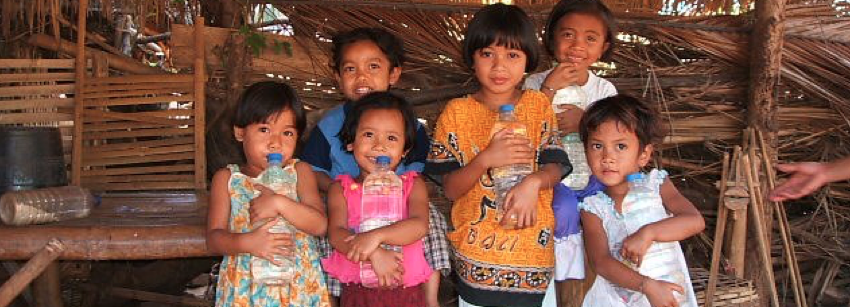
Since 1970, YDD has worked on water & sanitation in more than 2,000 villages in Indonesia (Java, Madura, Kalimantan, NTB, NTT, Maluku, Papua, Aceh, etc) with support from various bilateral & multilateral organisations and international NGOs (e.g World Bank, ADB, UNICEF, CIDA, SDC, AusAid, Oxfam, ICCO).
YDD targets underprivileged communities where water and sanitation are primary concerns. Besides use for subsistence needs, water and sanitation problems lead to obstacles that undermine communities’ abilities to embark on more productive activities. YDD applies a community-based approach towards clean water and sanitation projects, in which communities should contribute in whatever means possible in order to promote a sense of ownership.
In the context of YDD’s water & sanitation program, the following activities/steps are undertaken:
- Increase the awareness of targeted communities with regard to hygiene and sanitation. This involves the development of various methods and tools, modified and adapted to suit the socio-economic and socio-cultural characteristics of the target groups.
- Mobilization of community resources (self help) and external resources (local government or donor agencies interested in providing support)
- Technical Survey and Design
- Physical Project Implementation
- Post Implementation Facilitation, which involves the formation of community water organisation for O&M and the identification of potential post water appropriate economic development activities
The type of technological systems applied are influenced by the natural conditions of the respective target areas, such as the utilisation of available spring water, ground water, treatment of surface water or harvesting rain water.The clean water division currently works with four water carrying systems that have been successfully implemented throughout Indonesia:
- Gravity-fed systems – using pipes to carry spring or river water to villages
- Hydraulic ram – a simple, low-cost pumping system used in areas where piping is not an option
- Rainwater collection systems – used in places where ground water is not available
Additionally, the clean water division disseminates several methods of sanitizing drinking water using simple, low-cost technologies:
- Organic flocculation – using the natural coagulating properties of the seeds of a native tree (movinga olutera)
- Solar Disinfection (SODIS) – using the sun’s rays to effectively disinfect water of diarrhea causing pathogens using a simple, clear plastic bottle.
- PUR – a powder chemical treatment combining chlorine and a coagulating agent
Water lifting system with hydraulic ram method (below)
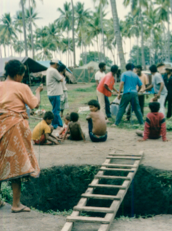
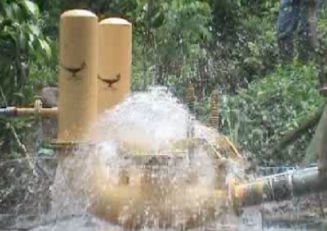
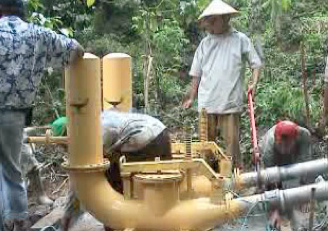
Typical public tap where people can take water (below-right) and communal sanitation facility
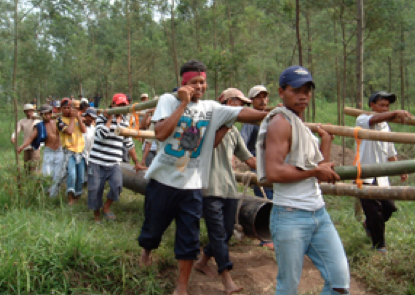
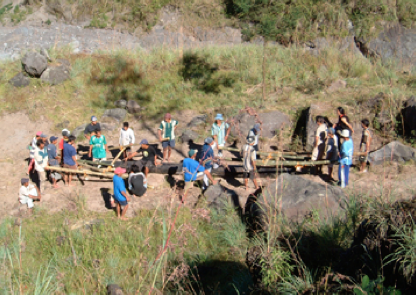
YDD can only help communities that are willing to help themselves. Therefore, in all water & sanitation programs target communities should contribute in whatever means possible, including (but not limited to) providing local materials, labor, and possible financial inputs. This has become the essence of partnership and the foundation to foster a sense of ownership.
